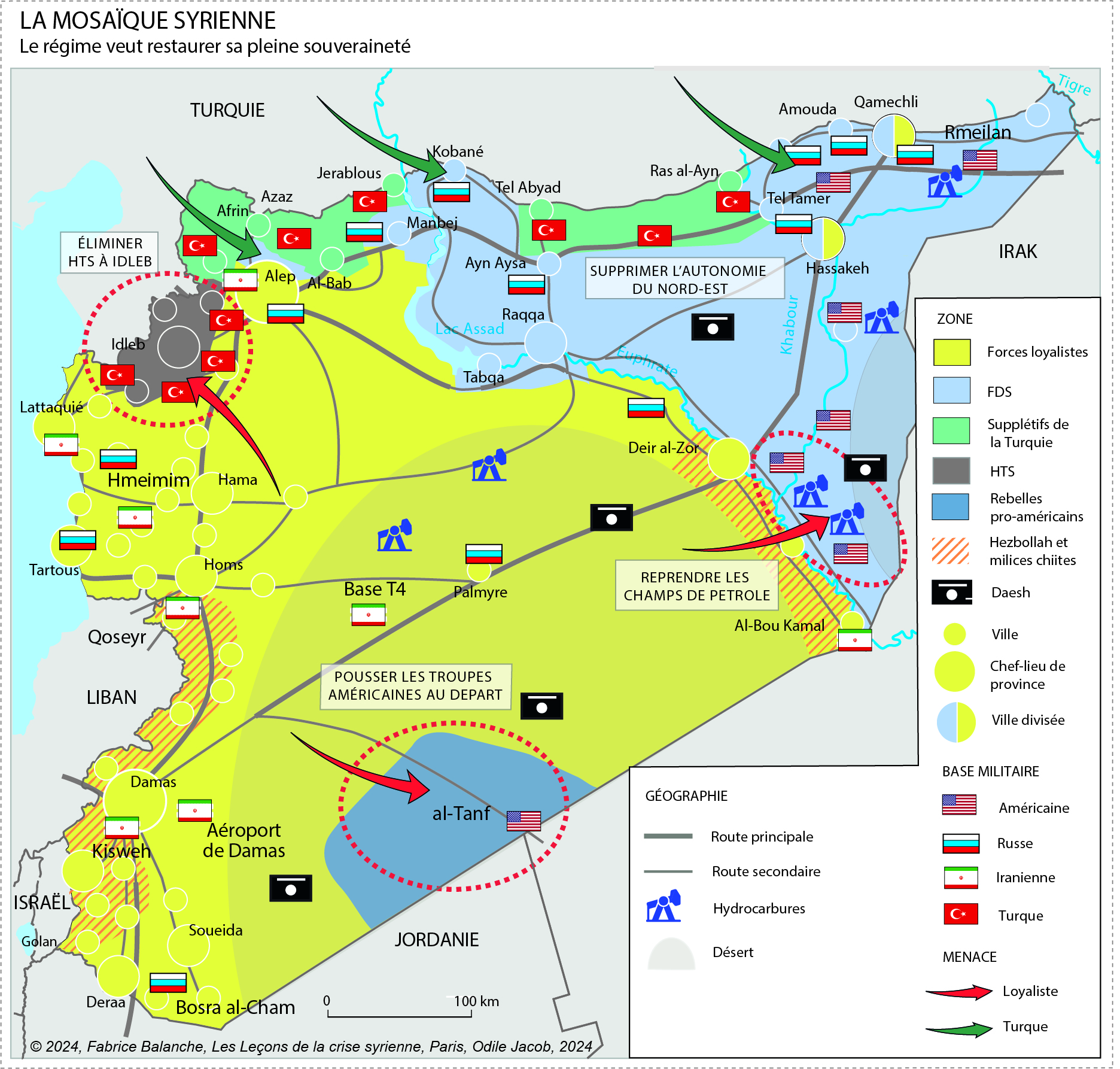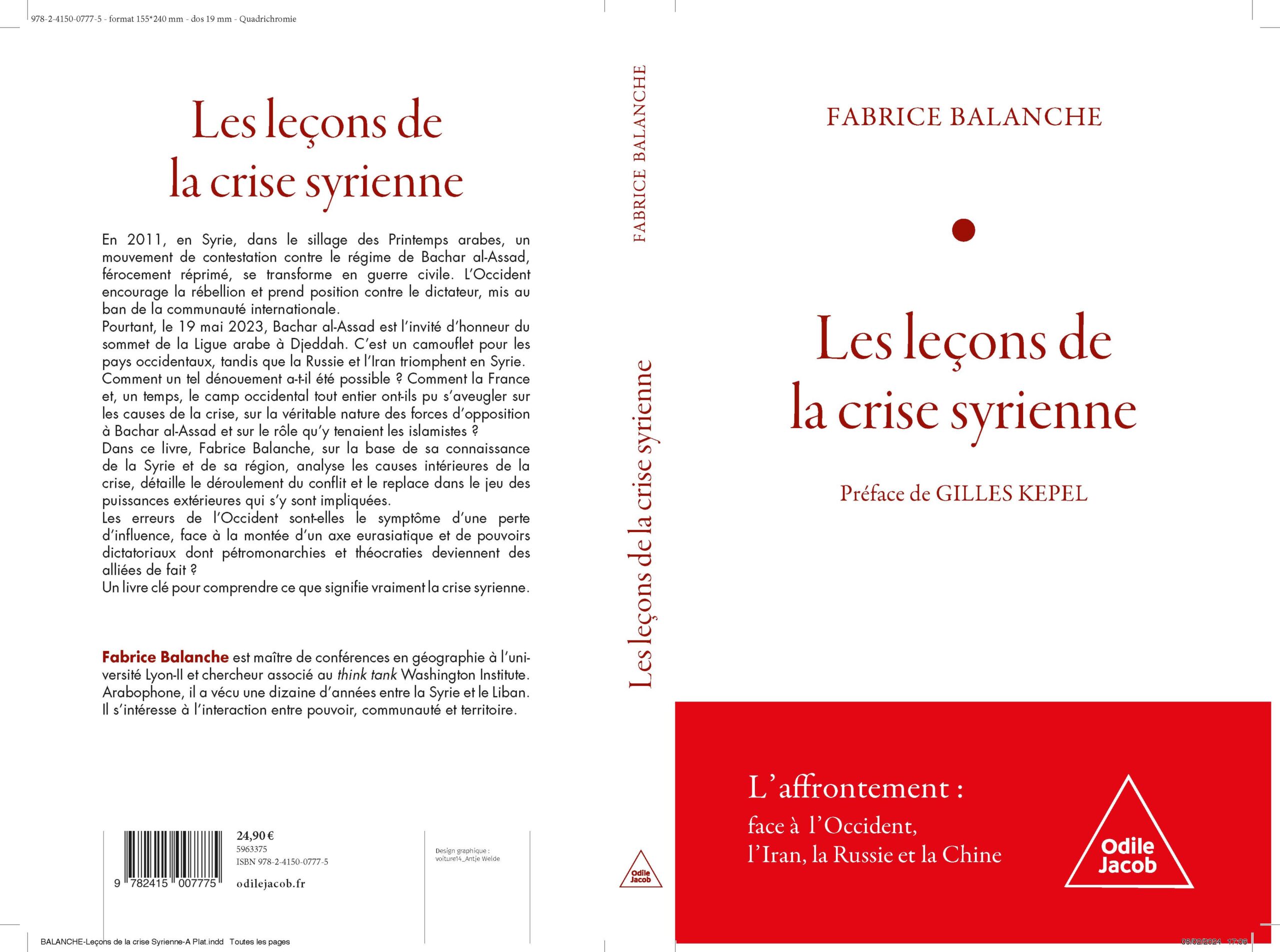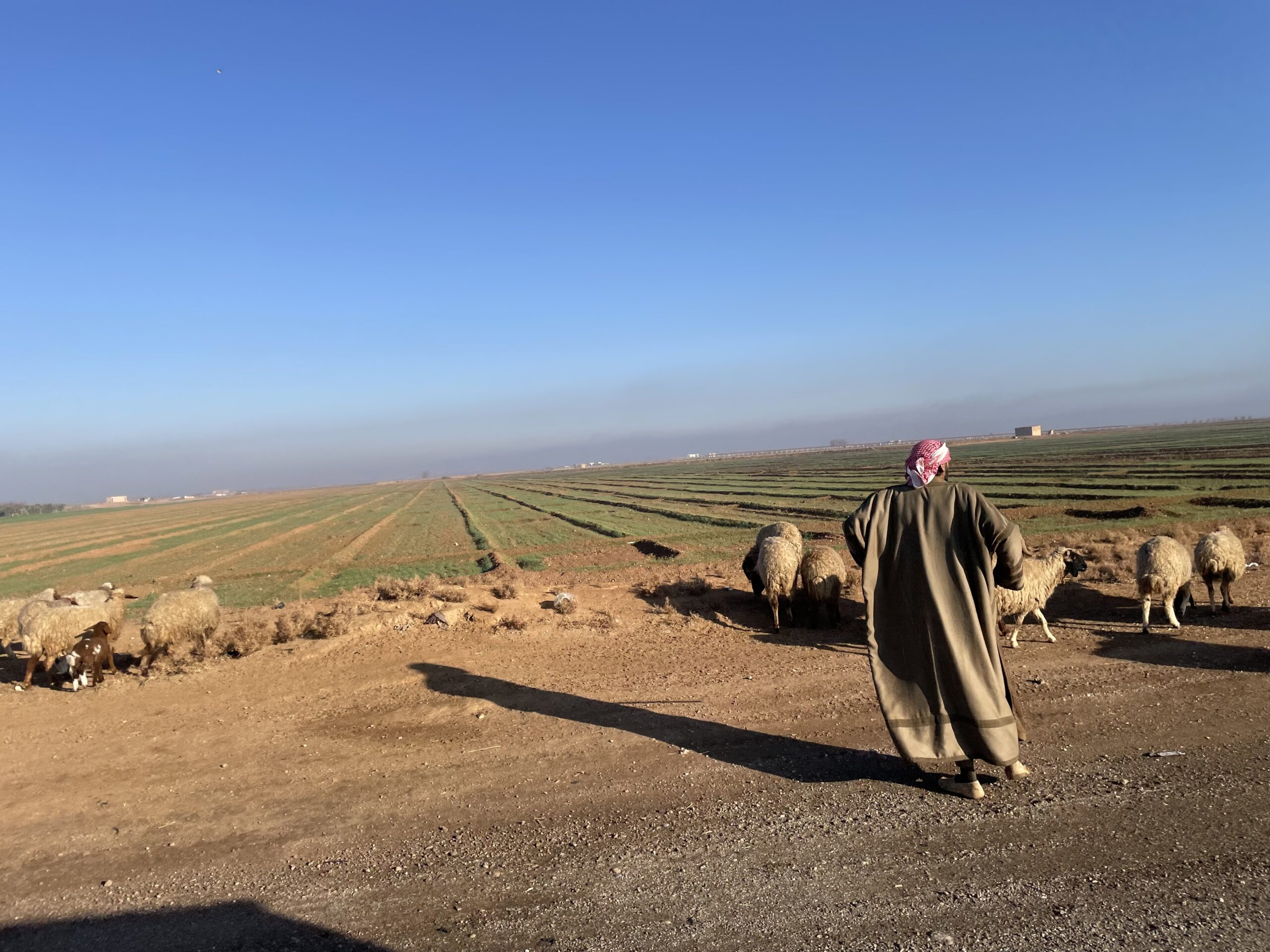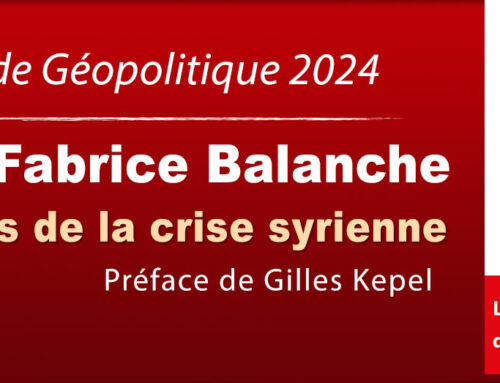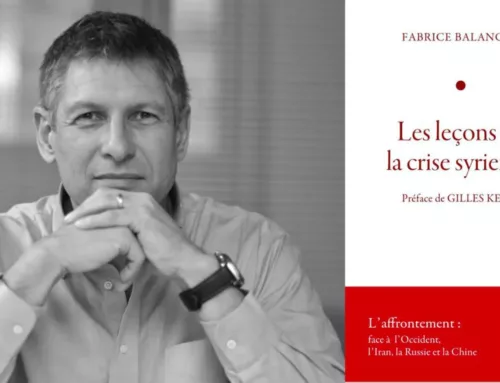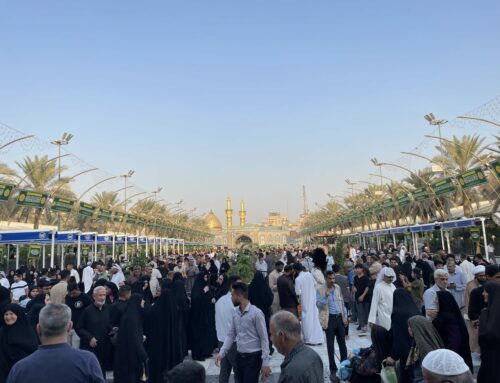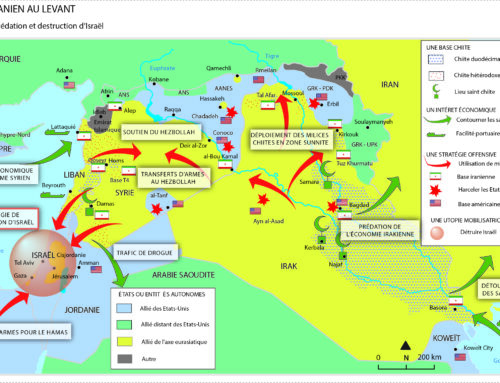March 14, 2024, Fabrice Balanche for North Press Agency
Fabrice Balanche is lecturer at Lyon University, adjunct fellow at the Washington Institute. He published : “Les leçons de la crise syrienne” (In French), Paris, Odile Jacob, in March 2024.
https://npasyria.com/en/112149/
March 15 is conventionally considered the anniversary of the start of the Syrian revolt. That day, around 50 people demonstrated in silence in front of the governor’s palace in Daraa. On Friday March 18, a larger gathering took place outside the mosque, but this time it left two people dead. The funeral was attended by thousands of people, and it was the start of a series of repressed demonstrations and clashes between the population of Daraa and the regime. The wind of the revolt spread throughout Syria. Millions of Syrians took to the streets to demand a change of government, as in Tunisia and Egypt. However, the process was not the same as in these two countries due to a rapid Islamization of the rebellion which frightened the minorities, a system of power more resilient than expected and international issues.
Divided country
13 years later, what assessment can we make? On the human level, we have had 350,000 deaths according to the UN, eight million people are refugees abroad and six million are internally displaced out of a total of 26 million Syrians in 2024. Syria is divided into four main entities: the regime which controls 2/3 of the country and around 11 million inhabitants out of the 18 million who reside in Syria. Hayat Tahrir al-Sham, the Syrian branch of al-Qaeda, created an Islamic emirate in Idlib, where 2.5 million Syrians live concentrated on 3,000 km². The terrorist group takes advantage of international aid and Turkish protection to impose its Islamic totalitarianism. Turkey occupies a discontinuous strip of territory in the north, from which it has expelled the Kurdish population, and which has 1.5 million inhabitants under the yoke of former rebel militias, including elements of ISIS, grouped within the so-called Syrian National Army (SNA). Finally, the Autonomous Administration of North and East Syria (AANES), where three million people reside under the protection of the Syrian Democratic Forces (SDF) supported by the United States. For completeness, we must add the American military base at al-Tanf in the southeast of the Syrian desert.
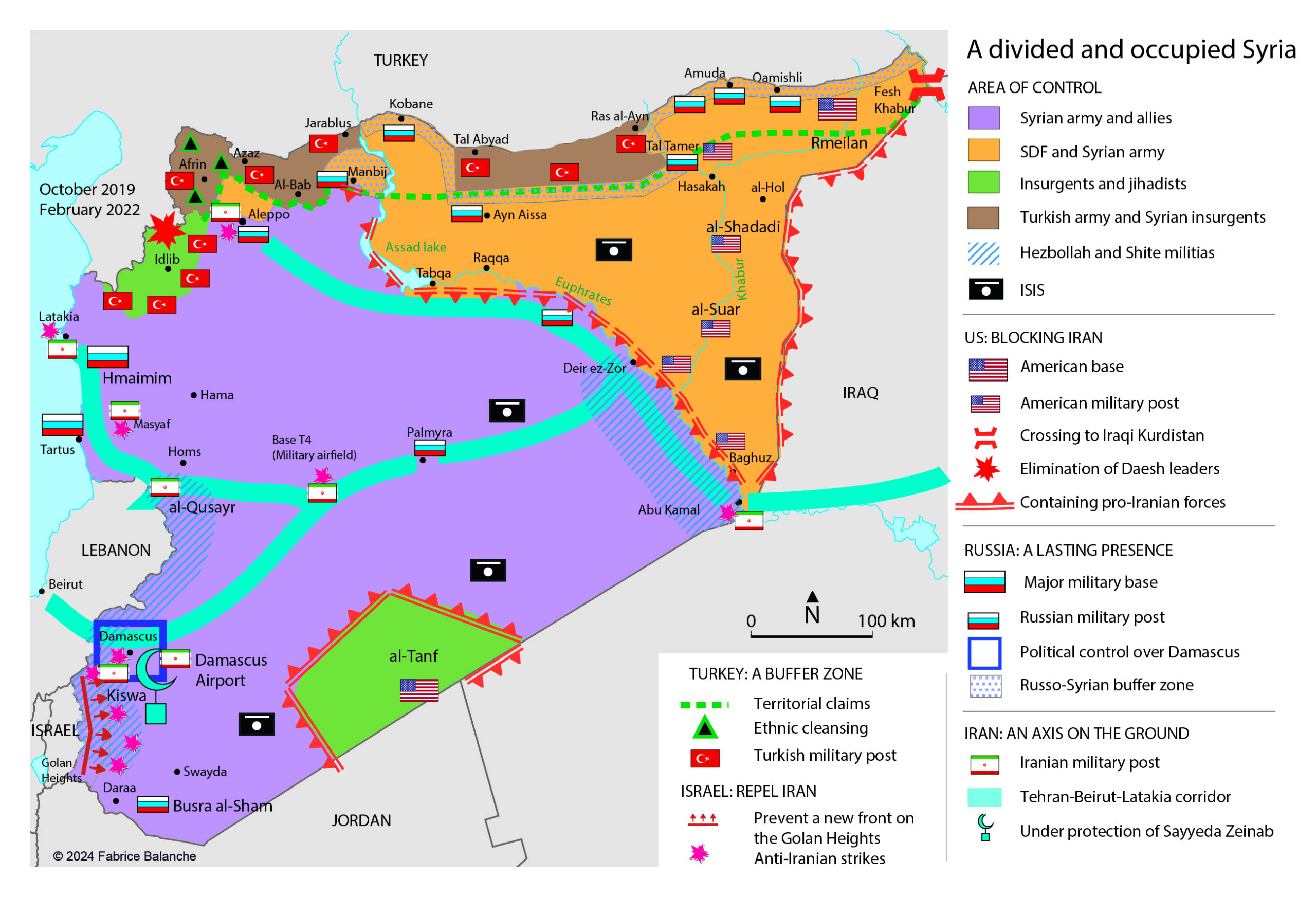
Frozen conflict
Since March 2020, the date of the regime’s last offensive against Idlib, the front lines have not moved, and it seems that the partition of the country is ongoing. However, it is a frozen conflict. Because the regime has not given up on reconquering the entire territory. For this, it needs the agreement of Russia and Iran, which provide it with its military resources, to negotiate with Turkey and to obtain the departure of American troops from the AANES. Because these four international actors occupy the field and defend their own interests, local proxies have neither the means nor the permission to launch large-scale actions on their own. Certainly, in Idlib, Abu Mohammad al-Julani is bored and dreams of conquest, which is why he attacked the pro-Turkish militias in Afrin and why he dreamed last September of seizing Manbij. In this specific case, he had the approval of Turkey, however Russian strikes denied them the permission.
Since the war in Ukraine, Russia has been sparing Turkey, whose benevolent neutrality it needs. This means that the Syrian regime does not have the right to invade Idlib and territories under Turkish control. The United States also does not want to get angry with the Turks, because they need their positive collaboration within NATO, as we have seen with Erdogan’s blackmail upon Sweden’s entry and Finland. This unfortunately explains why Washington lets Ankara destroy AANES infrastructure and strike the SDF with its drones. But the most serious threat to the AANES now comes from Iran, which has been harassing American troops in Syria and Iraq, officially in retaliation for American support for Israel since the start of the war in Gaza. The American bombings in Iraq on the Shiite militias ended up pushing the Iraqi government, under the influence of Tehran, to demand an end to the mission of the International Coalition against Daesh. A bilateral military agreement between Washington and Baghdad is currently being negotiated, but it is not certain that it will succeed and especially that the United States will be able to maintain a powerful presence in Iraq, which would also call into question the American military presence in northeastern Syria.
In May 2023, Bashar al-Assad was reintegrated into the Arab League. This means that he no longer has anything to fear from Saudi Arabia and Qatar, which in the past largely supported the Syrian rebellion. In March 2023, Riyadh and Tehran concluded a diplomatic agreement under the auspices of Beijing, the aim of which is to reduce tensions between the two countries. Iran forbids the Houthis from launching missiles in Saudi Arabia and the latter abandons Lebanon, Syria and Iraq to Tehran, no longer supporting the Sunnis there. This is in summary what the deal was finalized. However, Riyadh does the minimum service towards Damascus, and refuses to invest billions to rebuild the country, as hoped by Bashar al-Assad and the Syrians who are suffering a disastrous economic situation. The regular riots in Suwayda reflect popular exasperation, but after thirteen years of a bloody war, the population only aspires to peace, and it is unlikely that the regime will be destabilized again by a revolt. Syrians rather seek their salvation in emigration.
Ethnic and political cleansing
Eight million Syrians have left the country since 2011 and there are still many candidates for exile, because it is difficult to see an improvement in living conditions, quite the contrary. On the one hand, the conflict is only frozen, but not over, so there is great concern about a resumption of fighting, particularly in areas that still escape Damascus. On the other hand, the Syrian regime is applying a strategy of massive political purge which it considers essential to its survival. The 2011 revolt was powerful because the Sunni Arab majority, thanks to powerful demographic growth, reached 65% of the population compared to 50% in 1980, to the detriment of declined religious minorities (Alawite, Christian, Druze, Ismaili, etc.). Minorities, due to low fertility, fell at the same time from 35% to 20%. Which reduced the Alawite military reservoir. As for the Kurdish community, it remained stable during this period. Among Sunni Arabs, the share of secularists has been reduced in favor of Islamists, who are much more prolific, which explains the support that ISIS and al-Nusra were able to find in a part of the Syrian population converted to Islamist ideology. The fact that eight million Syrians, three quarters of whom are Sunni Arabs, have left Syria strengthens the influence of the loyalists. This is also one of the reasons why the North-West will undoubtedly remain under Turkish domination, because the 4 million Sunni Arabs and Turkmens, pro-opposition and Islamists, would constitute a threat to the stability of the regime. Bashar al-Assad dreams of expelling them to Turkey, but Erdogan is firmly opposed to this. Finally, Syrian refugees are a resource for the regime, thanks to the money they transfer to help their families survive. It is estimated that the million Syrians in Europe send 2 to 3 billion euros back to Syria each year: this is the country’s main source of income.
Permanent conflict situation
After 13 years of conflict, active or frozen, Syrians aspire to peace and a decent life. Unfortunately, the conditions to achieve this is not met, either internally or externally. The world has entered in a confrontation between the West and the new Eurasian bloc dominated by Russia, China and Iran, as during the Cold War. Syria is on this axis of crises between the two blocs and constitutes a theatre of military confrontation by proxy. The poverty that reigns in the country provides the belligerents with thousands of potential combatants, young men without work and without hope, for whom the war represents an income and a chance for social promotion. The war businessmen and warlords, incapable of retraining in formal activities, have an interest in maintaining a permanent conflict, the source of their wealth and their power. Syria joins the group of failed states with continued instability.


